Shanghai, China – Wednesday, June 1st to Monday, June 6th
I was set to embark on the most ambitious travel journey of my life. For nearly the entire month of June, I would set off with a backpack across three countries—China, South Korea, and Japan.
And, because I had been so busy with schoolwork, finals, and trying to squeeze in whatever travel I could, I was departing with almost none of my usual travel planning complete. Apart from a vague itinerary of parks and cultural destinations outlined in my head, I had exactly three plane tickets booked: one from Shenzhen to Shanghai, another from Shanghai to Seoul, and finally a ticket from Tokyo back to the United States at the end of the month. (Note that they don’t all connect.) Thinking back to some of my improvised escapades across Europe last year, I had no idea what awaited me as I left for the airport that morning, but I knew I could reasonably expect even more unexpected twists.
Even the very first leg revealed the extent of my under-planning and forced improvisation for this trip. Because airfare for domestic routes within China is much cheaper from Shenzhen than Hong Kong, I elected to fly out from Bao’an International Airport. It wasn’t my first time using that airport, but the arrival schedule and public transportation options were different for the morning departure. Rather than pay a princely sum for the charter bus service, I figured I could take the Hong Kong metro to Shenzhen, then take the Shenzhen metro connection as far as I could to the airport, where public transportation options would presumably be plentiful to complete the last short leg of the journey. The airport metro connection wasn’t complete as of 2011, and I based this plan on nothing more than a cursory glimpse at the metro’s transit map, which appeared to show they were only one station away from completing the route. So close! (You can see where this story is going…)
Fast-forward less than two hours before my flight is scheduled to depart, and I emerged from that last metro station into what could generously be called a vacant lot. No signs of an airport anywhere near the horizon. It wasn’t quite as bad as the Chongqing metro station to nowhere, as there were a grid of lightly trafficked streets and several occupied office buildings nearby, but the first impression was similar. I hustled hoping to find a bus, a taxi, a rickshaw, anything that might get me closer to the airport.
Incredibly fortunately, I actually did find a taxi stand a couple of blocks away, with a taxi parked and the driver snoozing inside. I tapped the window. The driver woke, evidently surprised to find a random foreigner at this remote stand where I presumed he goes to catch a longer afternoon nap while on the clock. Nevertheless, he was very enthusiastic about the new business, or at least I assumed so from the tone of voice. The English word “airport” meant nothing to him. I tried to pantomime an airplane taking off, complete with sound effects. Still nothing. I grab a pen and paper from my backpack, and quickly jot a doodle of an airplane. This does the trick, and immediately we’re off!
The airport proves to be much further from this “second-to-last stop” than I anticipated… giving me plenty of time to review the quality of my airplane doodle and wonder if, when we arrive, my driver might be proud to present to me the city’s heretofore unknown replica of Brazil’s Cristo Redentor statue. Despite the language barrier we still tried to make conversation, as he pointed out an elevated rail line under construction next to the highway, which gave me some reassurance we had a mutual understanding of the intended destination.
Alas, a few minutes later I indeed got to the airport with time to spare, having still come out ahead of what I would have paid for the bus service. All things considered, this trip was off to a great start!

 Although it was five years before the debut of Shanghai Disneyland, Shanghai was still my top priority destination in mainland China. Apart from the appeal of the coasters, Shanghai is China’s largest city and, perhaps with the exception of Hong Kong, the most cosmopolitan. “The Paris of the East” I’ve always heard, although really it feels more like China’s New York but with much newer and cleaner infrastructure. I had five full days to explore, and while the majority of that time was taken up by coasters, I still made sure I’d be able to explore the city. Fortunately, there’s also a few opportunities to do both at the same time. I stayed at the Rock & Wood Hostel, a quaintly contemporary accommodation hosting numerous like-minded travelers, a few of whom I’d befriend for a few outings. It’s very useful to have the company when you’ll be traveling alone for an extended period of time.
Although it was five years before the debut of Shanghai Disneyland, Shanghai was still my top priority destination in mainland China. Apart from the appeal of the coasters, Shanghai is China’s largest city and, perhaps with the exception of Hong Kong, the most cosmopolitan. “The Paris of the East” I’ve always heard, although really it feels more like China’s New York but with much newer and cleaner infrastructure. I had five full days to explore, and while the majority of that time was taken up by coasters, I still made sure I’d be able to explore the city. Fortunately, there’s also a few opportunities to do both at the same time. I stayed at the Rock & Wood Hostel, a quaintly contemporary accommodation hosting numerous like-minded travelers, a few of whom I’d befriend for a few outings. It’s very useful to have the company when you’ll be traveling alone for an extended period of time.
A dumpling shop nearby provided a most delicious start to a couple of my days in Shanghai. While I didn’t have a chance to try Shanghai’s famed xiao long bao soup dumplings, these fried dumping varieties were just as satisfying. Plus, no “foreigner surcharge.”
 Setting off for a day in surprisingly lovely weather.
Setting off for a day in surprisingly lovely weather.
I started my first day taking the metro to Zhongshan Park, a large green public park located in Changning district, a bit west of the city center. While it was a very pleasant place to start a day exploring one of the world’s major cities…
…my real target, predictably, was of the coasting variety.
Sadly, the Big Worm Inertia Train appeared closed. While I couldn’t be certain that the ride operators were just on rotating, I got the sense that adults weren’t really the intended ridership anyway. After a few minutes of no activity, I took the hint and moved on, short one credit but still with a small shred of dignity. (This SAMECO Wacky Worm style coaster has since been retired.)
Rules signage usually makes for an worthwhile read. While there’s always the chance you’ll find an unexpectedly hilarious example of Chinglish, more interesting is what they reveal about the society at large. Rule 1 reads, in slightly tautological fashion: “Carry forward the new social prevailing custom: obey the public rules.” The pace with which China has tasked itself with modernization has left more than a few of its people behind, and thus rules serve not only the standard prohibitive function, but also a prescriptive purpose to instill civilizing virtues and morals among the citizenry. Whether or not this approach was or still is effective, I can’t say.
 Taking the Shanghai subway a few stops, I arrived near the original city center at People’s Park and People’s Square. Much smaller and more urbanized than Zhongshan Park, many of the city’s top museums and other cultural landmarks can be found nearby. Plus, another small collection of portable rides, including another coaster credit.
Taking the Shanghai subway a few stops, I arrived near the original city center at People’s Park and People’s Square. Much smaller and more urbanized than Zhongshan Park, many of the city’s top museums and other cultural landmarks can be found nearby. Plus, another small collection of portable rides, including another coaster credit.
The Gliding Dragon is a simple Chinese-made kiddie powered coaster with two helices, nearly identical to the Zamperla model.
Plus, unlike my last stop, this one also was obviously open and accepting tickets from all riders.
In the years since, Gliding Dragon has also been retired and replaced with a slightly larger gravity-driven model.
The amusement area skewed towards a slightly older audience, somewhat unusual for a ride collection at a public park which are typically focused on the youngest set.
People’s Square is surrounded by some impressive architecture on all sides. And this isn’t even the part of the city where all the tallest skyscrapers are located. (I’ll get there later.)
When on a budget, street vendors make a convenient and adventurous lunch option. (Especially once you notice the unique placement of their electrical outlets.)
Or stop for a drink at a cafe that probably needs to hire a new graphic designer.
The big attraction of People’s Square is the Shanghai Museum, the most popular museum in the city showcasing thousands of pieces of ancient Chinese art.
The five-level museum also has the benefit of free admission for all. Another win for the communist way!
Despite the abundance of artifacts from nearly all eras of Chinese history, I didn’t find the Shanghai Museum overwhelming. Pretty much everything is one display in fairly open floor plans with darker, focused lighting, and fairly minimal interpretive content. It made it easy to quickly take in a lot of work, but also to pause and closely examine any pieces in particular that catch your eye. Some of the pieces were quite stunning to witness; of all the museums I’d visited in Asia up to this point, the Shanghai Museum had by some margin the best collections.

Another museum to see close to People’s Square is the Shanghai Urban Planning Museum.

 The primary attraction here is what is supposedly the world’s largest miniature model of a city, depicting the city of Shanghai as its planners expect it to appear in the year 2020. So… I guess it’s time to head back here and see how accurate it turned out?
The primary attraction here is what is supposedly the world’s largest miniature model of a city, depicting the city of Shanghai as its planners expect it to appear in the year 2020. So… I guess it’s time to head back here and see how accurate it turned out?
The model can also activate a nighttime mode.
Just in case there was any confusion about what kind of political economy can create such a vast urban center.
 From People’s Square I’d walk a little over a mile east towards the Bund, Shanghai’s famed riverfront area, across which was my main destination for the evening, the Oriental Pearl Tower.
From People’s Square I’d walk a little over a mile east towards the Bund, Shanghai’s famed riverfront area, across which was my main destination for the evening, the Oriental Pearl Tower.
The walk was a pleasant one, with more varied architectural styles from largely western influences, revealing the city’s layered history as a trading port, something I hadn’t seen much of so far in my travels through China, even in the once-British colony of Hong Kong.
Along the way I also had to make a stop at a Japanese travel agency I researched online to pick up a JR Rail Pass for my upcoming tour in Japan. The unlimited pass is only available to non-Japanese tourists and sold outside the country at select travel agencies. Oddly, when I showed up, despite being in the tourism industry where presumably they have to deal with travelers from around the world, they only had one junior office assistant in the entire company that spoke English and could translate for the agent. Apparently they’re used to only selling the pass to Chinese visitors? Either way, there fortunately weren’t any further issues, and I soon had my rather expensive rail pass tucked securely in my pocket as I continued my trek.



 I soon arrived at the Bund riverfront, looking across at the magnificent skyscrapers of Lujiazui reflecting the golden early evening light.
I soon arrived at the Bund riverfront, looking across at the magnificent skyscrapers of Lujiazui reflecting the golden early evening light.
 The view was worth pausing for more than a few pictures, especially of the iconic Shanghai World Financial Centre (the tall one looking like a bottle opener) and the somewhat amusing-looking bulbs of the Oriental Pearl Tower, where I would soon be headed. (A few years after my trip, the skyline would be joined by the Shanghai Tower, the second-tallest architectural building in the world.)
The view was worth pausing for more than a few pictures, especially of the iconic Shanghai World Financial Centre (the tall one looking like a bottle opener) and the somewhat amusing-looking bulbs of the Oriental Pearl Tower, where I would soon be headed. (A few years after my trip, the skyline would be joined by the Shanghai Tower, the second-tallest architectural building in the world.)






 To cross the Huang Pu River there are several options. Metro lines run underneath for the quickest route, or if you’ve got more cash to spare you can take the psychedelic Bund Sightseeing Tunnel. I didn’t have much cash, so instead I opted for one of the ferry boats, as a way to still enjoy the view across the entire river.
To cross the Huang Pu River there are several options. Metro lines run underneath for the quickest route, or if you’ve got more cash to spare you can take the psychedelic Bund Sightseeing Tunnel. I didn’t have much cash, so instead I opted for one of the ferry boats, as a way to still enjoy the view across the entire river.

 The ferry terminal drops off a couple of blocks away from the Oriental Pearl Tower. The walk through Lujiazui was surreal: wandering through a canyon of supertall glass buildings in every direction, perfectly pristine. Yet despite the building density, arriving after the evening rush hour meant the place was practically a ghost town, the streets as quiet as a sleepy neighborhood block. I can see why it’s a popular location for filmmakers making a sci-fi or espionage thriller movie.
The ferry terminal drops off a couple of blocks away from the Oriental Pearl Tower. The walk through Lujiazui was surreal: wandering through a canyon of supertall glass buildings in every direction, perfectly pristine. Yet despite the building density, arriving after the evening rush hour meant the place was practically a ghost town, the streets as quiet as a sleepy neighborhood block. I can see why it’s a popular location for filmmakers making a sci-fi or espionage thriller movie.





 Crowds and traffic picked up as I approached the tourist area around the Oriental Pearl Tower. Truly something for every indulgence.
Crowds and traffic picked up as I approached the tourist area around the Oriental Pearl Tower. Truly something for every indulgence.



 Arriving at the Oriental Pearl Tower. The tower opened in 1994 with a height of 468 meters (1,535 feet), and with its set of big pink shiny globes is one of the more delightfully eccentric tower designs I’ve ever seen. At the time of my visit in 2011 it was the second-tallest building in Shanghai; displaced to third-tallest since 2015.
Arriving at the Oriental Pearl Tower. The tower opened in 1994 with a height of 468 meters (1,535 feet), and with its set of big pink shiny globes is one of the more delightfully eccentric tower designs I’ve ever seen. At the time of my visit in 2011 it was the second-tallest building in Shanghai; displaced to third-tallest since 2015.
Coaster enthusiasts in particular have a reason to visit this lower globe, but I’ll get to that later.
 Paying my admission and going up…
Paying my admission and going up…
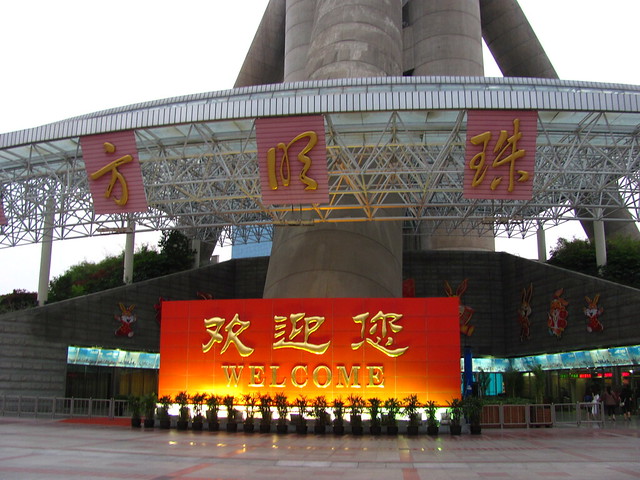

 The tour takes you to a couple of different levels on the tower. It starts at the highest level and then you work your way down. I arrived just in time to catch the view of Shanghai as the last rays of light fell over the city.
The tour takes you to a couple of different levels on the tower. It starts at the highest level and then you work your way down. I arrived just in time to catch the view of Shanghai as the last rays of light fell over the city.














 Going down to the next level along the self-guided tour, the viewing windows had some bad visibility issues, but a few not-so-dirty panels still revealed a mesmerizing neon city coming to life in the darkness.
Going down to the next level along the self-guided tour, the viewing windows had some bad visibility issues, but a few not-so-dirty panels still revealed a mesmerizing neon city coming to life in the darkness.




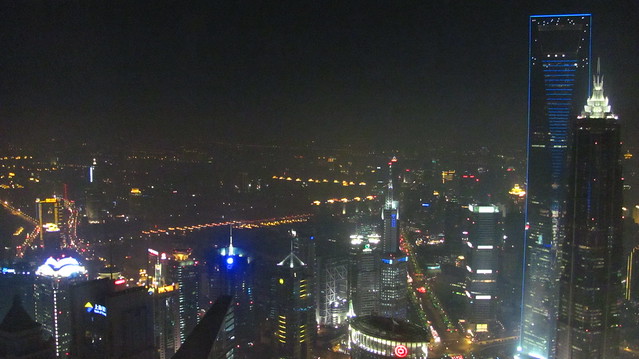
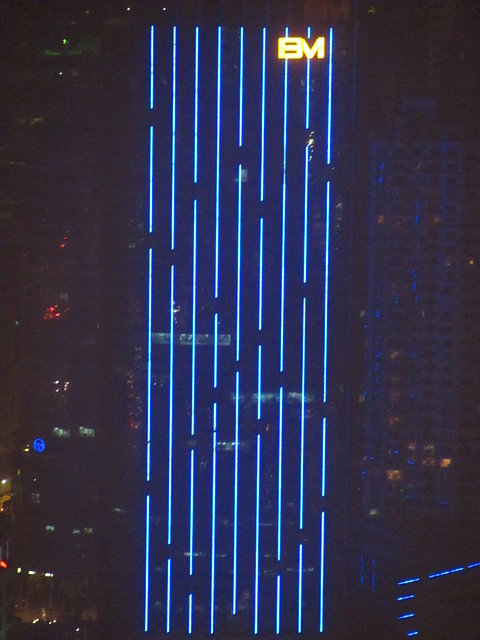

 The bottom part of this globe had a glass-bottomed floor. While even the world’s tallest drop tower attractions are to me nothing more than a glorified observation tower with an abrupt ending, for whatever reason when I’m standing on my own two feet looking down, my brain must put very little faith in my own balance as the onset of vertigo is really acute.
The bottom part of this globe had a glass-bottomed floor. While even the world’s tallest drop tower attractions are to me nothing more than a glorified observation tower with an abrupt ending, for whatever reason when I’m standing on my own two feet looking down, my brain must put very little faith in my own balance as the onset of vertigo is really acute.
Even with the somewhat opaque, scuffed-up floor, it still took me a few tries to get more than a few steps over the glass and not immediately turn back off. But eventually I got it and was even able to take an extended stroll around the deck… along with seemingly every other parent and child there that evening who had absolutely no concerns about it whatsoever. Human psychology is weird.
Finally, reaching the largest bottom globe, I got to the last big thing that was on my itinerary for this day. A rather depressingly run-down arcade is also home to the Oriental Pearl Tower’s Space Switchback, an enclosed Vekoma Roller Skater. While I had done six of these Vekoma family coasters just a month prior in Taiwan, none of those installations could claim to be inside a giant ball 300 feet above ground level. It’s also one of the few coasters in the Shanghai area to keep late hours, a good fact for managing a busy itinerary.
“Roller Coaster is a dangerous game.” Some might even say, the most dangerous game of all. Muahahaha!
Space Switchback is somewhat unique in that it starts with the main drop right out of the station, saving the lift for the end of the layout. Despite what I could imagine having some very tough space and dynamic load restrictions, the ride has a decent speed and a few sharp turns that make for a reasonably exciting experience. Throw in an outer space themed theming and lighting package that can best be described as “discotheque-esque,” and it’s reasonably worth the ticket price if not only for the credit.
Coaster complete, there was one last observation level to take in. While “only” 90 meters high, this one has the benefit of being open air with a simple mesh netting, meaning none of the glare or grime that plagued the other observation deck levels, as well as a welcome breath of cool fresh air to finish the tour (as fresh as air can be in Shanghai, at least).





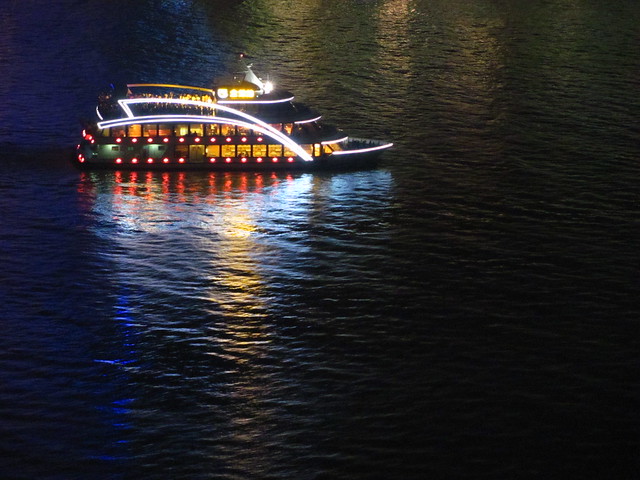

 By this point I was pretty beat and might have expected to head back to the hostel soon. However, the Oriental Pearl Tower still had one more surprise: the Shanghai History Museum, included free with admission to the tower. On my budget, I was unlikely to turn down a free anything, and there’s always the off-chance that I might miss something great or interesting. The museum detailed numerous scenes charting the development of Old Shanghai from its opening as a port in the mid-1880’s to the Communist revolution in the middle of last century. While it had several artifacts on display, most of the story was told through a series of reasonably detailed vignettes. Many of the wax figures lay just barely on the wrong side of the uncanny valley, but it was still worth the 30 or so minutes I spent wandering its exhibits. The museum was certainly better than its location foretold, and indeed the collection has since found a more permanent and deserving home in the historic Shanghai Race Club building since 2018.
By this point I was pretty beat and might have expected to head back to the hostel soon. However, the Oriental Pearl Tower still had one more surprise: the Shanghai History Museum, included free with admission to the tower. On my budget, I was unlikely to turn down a free anything, and there’s always the off-chance that I might miss something great or interesting. The museum detailed numerous scenes charting the development of Old Shanghai from its opening as a port in the mid-1880’s to the Communist revolution in the middle of last century. While it had several artifacts on display, most of the story was told through a series of reasonably detailed vignettes. Many of the wax figures lay just barely on the wrong side of the uncanny valley, but it was still worth the 30 or so minutes I spent wandering its exhibits. The museum was certainly better than its location foretold, and indeed the collection has since found a more permanent and deserving home in the historic Shanghai Race Club building since 2018.
And thus concludes the Oriental Pearl Tower’s journey through the future and past of Shanghai, or whatever that was. (I still just see the world’s largest Christmas baubles.)

 While my dining experiences were my most frequent sacrificial target for staying on budget, I still made sure at least one night to go out for a full Shanghainese meal. I did this with a group of three American students as well as a bearded fellow from Uruguay whom we all met at the hostel, and we descended on a nearby restaurant from recommendations from the hostel staff.
While my dining experiences were my most frequent sacrificial target for staying on budget, I still made sure at least one night to go out for a full Shanghainese meal. I did this with a group of three American students as well as a bearded fellow from Uruguay whom we all met at the hostel, and we descended on a nearby restaurant from recommendations from the hostel staff.
We had little idea what to order, and our waitresses were of minimal assistance after the first one freaked out at the prospect of having to serve five English-speaking westerners, and argued her case for reassignment with her equally anxious coworkers (all within clear eyesight from us). Eventually they got things sorted out, and from that point on the service was as efficient as you’d expect from a decent Chinese restaurant.
Among the more adventurous items we sampled, a bowl of drunken shrimp (eaten shell and all) as well as a dry pot filled with an eclectic and largely unknown mix of meats and veggies. All-in-all, a memorable meal!

 As I said, most of my time in Shanghai was using it as a base to explore the nearby amusement and theme parks. I’d start with the easy-to-reach Happy Valley Shanghai, as well as the city-based Jin Jiang Action Park. I’d spend another day traveling to the nearby city of Suzhou for two parks (both now defunct); Suzhou Amusement Land and Giant Wheel Park of Suzhou. And I concluded my time there with a full day at World Joyland in Changzhou, before heading to my next destination in Seoul.
As I said, most of my time in Shanghai was using it as a base to explore the nearby amusement and theme parks. I’d start with the easy-to-reach Happy Valley Shanghai, as well as the city-based Jin Jiang Action Park. I’d spend another day traveling to the nearby city of Suzhou for two parks (both now defunct); Suzhou Amusement Land and Giant Wheel Park of Suzhou. And I concluded my time there with a full day at World Joyland in Changzhou, before heading to my next destination in Seoul.
Which brings me to one last experience from my time in the city of Shanghai: the Shanghai Maglev Train. Floating on a cushion of magnets with a cruising speed of 431km/h (268mph), it was by far the fastest I’ve ever gotten to an airport… good thing too, as per usual I was later out the door than intended. I’m not quite sure what I was expecting from the experience, but it was so smooth and quiet, it made speeds capable of racing the world’s fastest supercars feel like a perfectly forgettable morning leisure drive. I’m sure there’s a lesson in there somewhere for designers of hugely fast and oversized steel roller coasters…

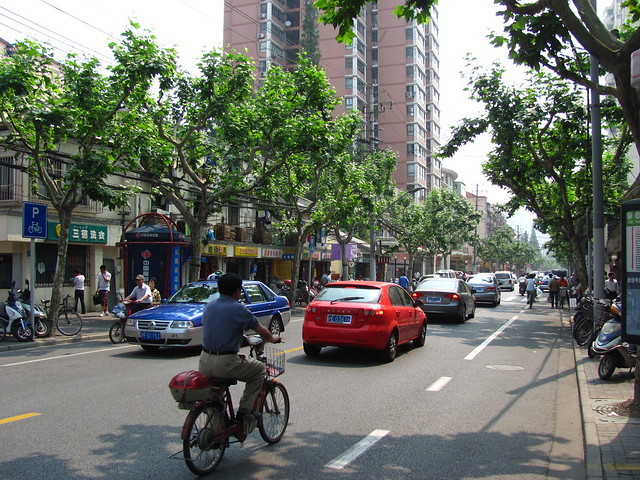




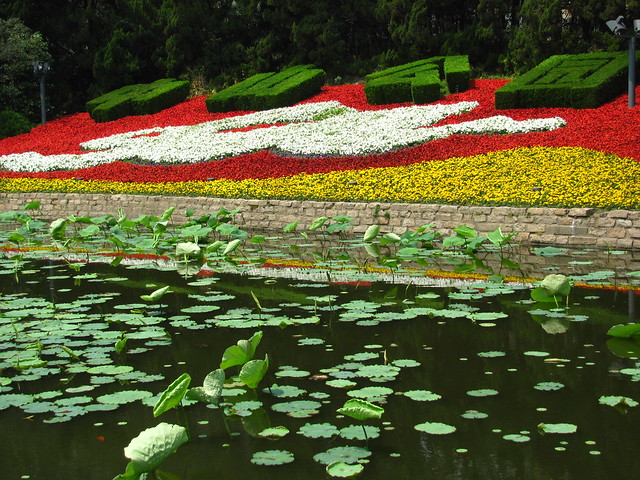





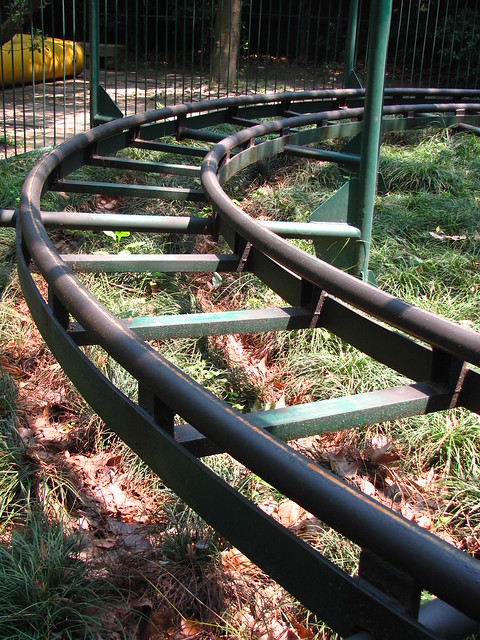








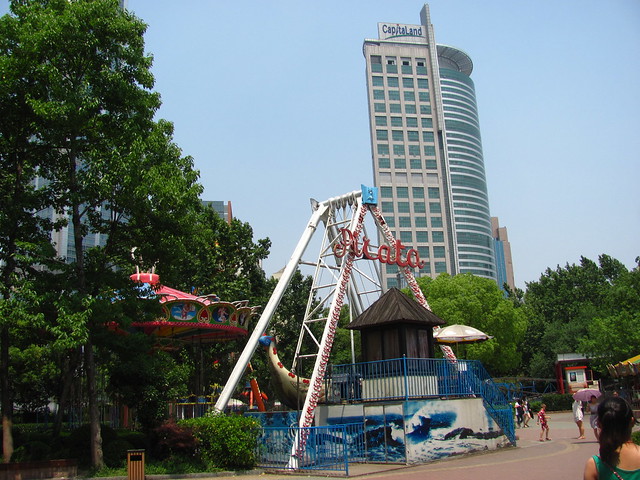














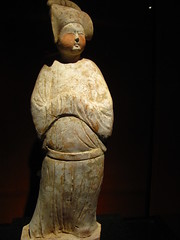




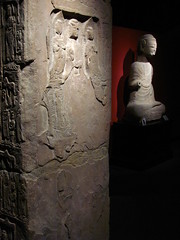






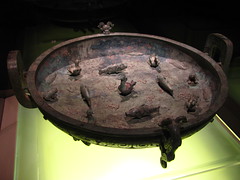










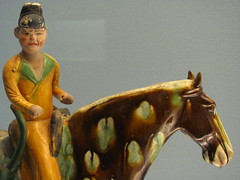


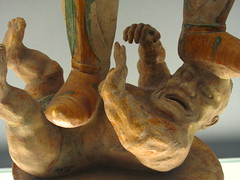

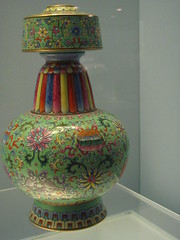









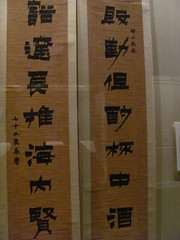
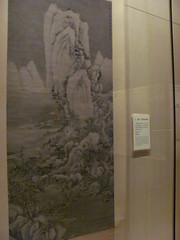
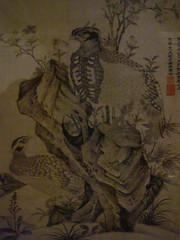


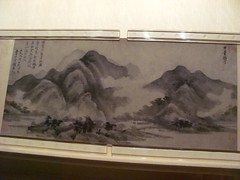






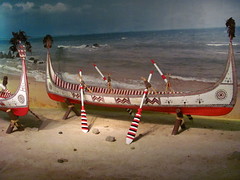
















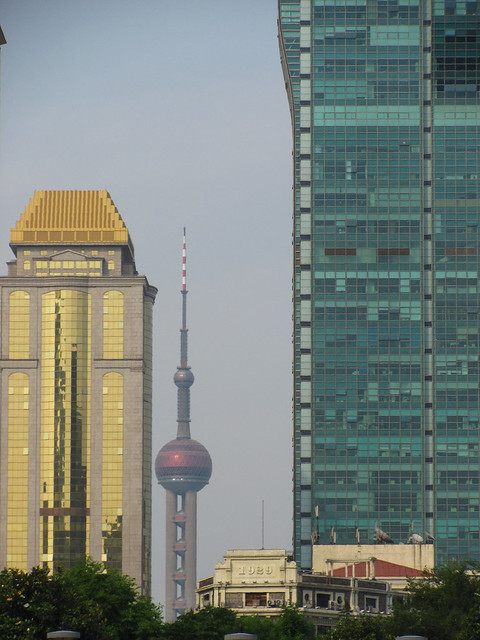











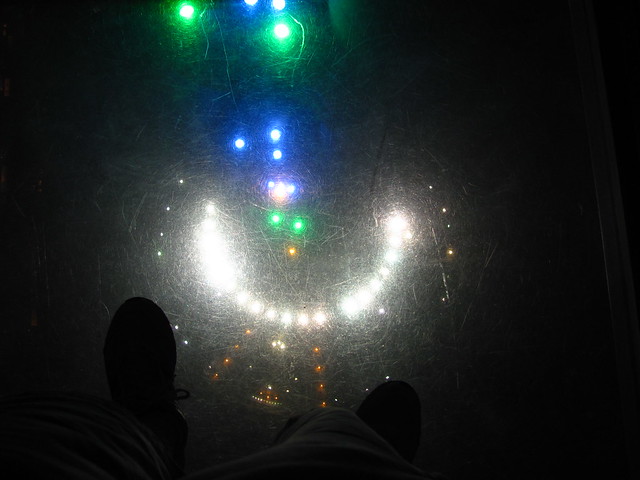







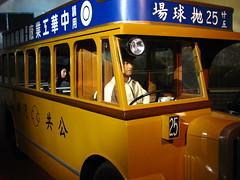









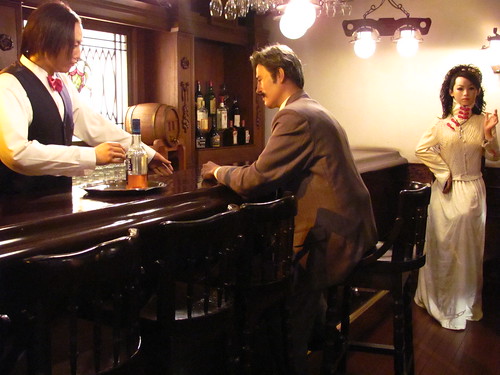




Comments